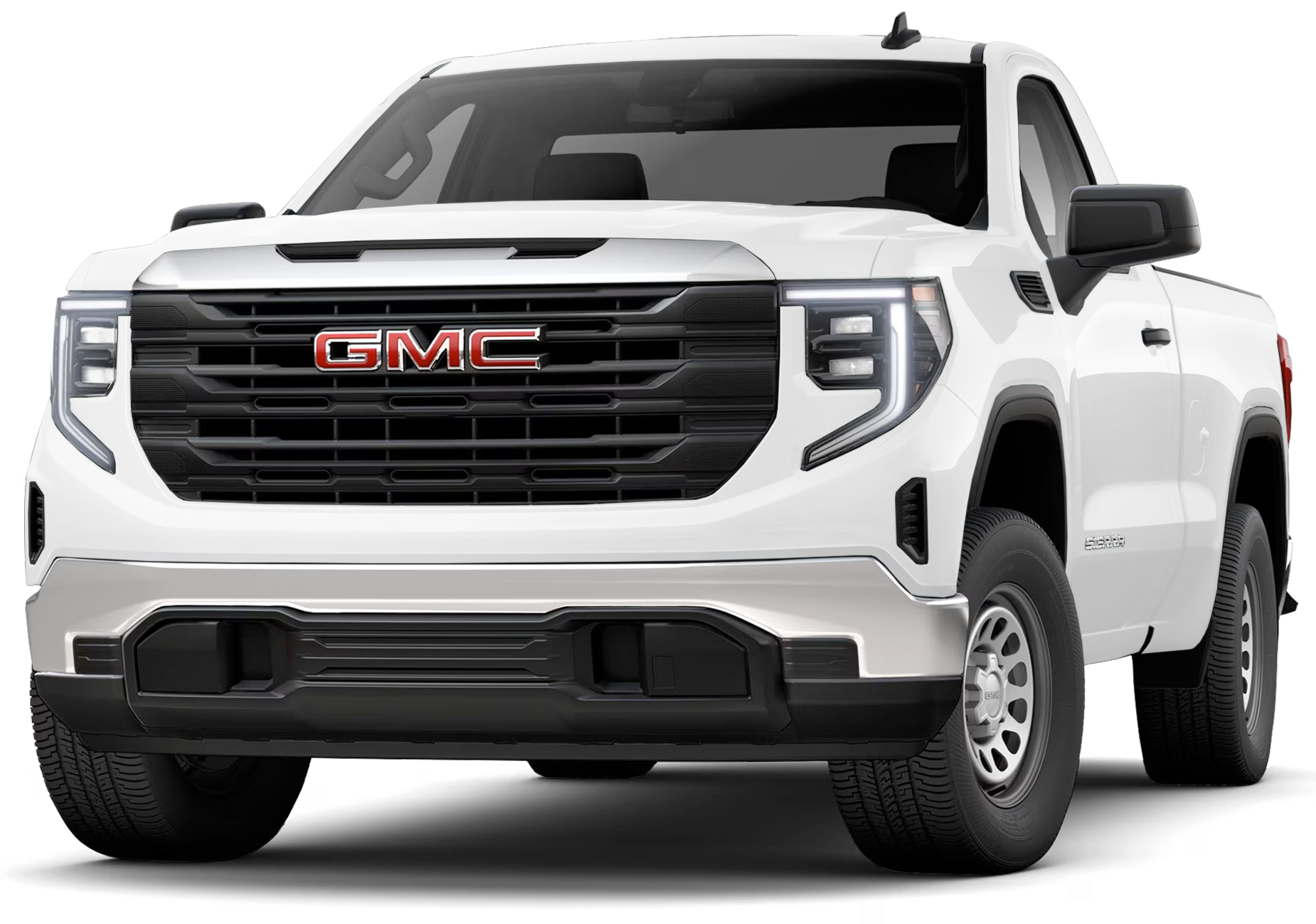Have you ever been cruising down the highway when suddenly your dash lights up like a Christmas tree? One of the most common and concerning indicator lights is the check engine light. Join us as we explore what causes it, the steps to troubleshoot, and how to reset it on a GMC Sierra.
What is a Check Engine Light?
The check engine light, also known as the malfunction indicator light (MIL), is an indicator that appears on a vehicle’s dashboard when there is a problem with its emissions control system. It serves as a sign to both the driver and technicians that performance testing or repairs are needed.
How Does Check Engine Light Work?
The check engine light is connected to a vehicle’s onboard diagnostics (OBD) system. This system runs diagnostic tests on sensors and components related to fuel/air mixture, exhaust emissions, and more. If it detects a fault, it lights up the MIL as a warning. Fault codes are also stored in the car’s computer to help identify issues.
What Does It Mean When the Check Engine Light Is On?
When the check engine light comes on, it doesn’t necessarily mean your vehicle is unsafe or undrivable. Often, issues are minor and won’t impact performance. However, ignoring the light can lead to more expensive repairs down the road if emissions components break. It’s best to scan codes and fix problems as soon as the light appears.

GMC Sierra Check Engine Light Reset | 9-Step Guide
Ready to erase that pesky check engine light? Here are the quick steps to reset it on a GMC Sierra:
Step 1: Diagnose with an OBD-II Scanner
Using an OBD-II scanner is crucial to properly diagnose any issues before clearing codes. Simply connect the scanner to the DLC (Data Link Connector) located under the dashboard, typically near the steering column. The scanner will read any stored trouble codes from the vehicle’s computer. Make note of which codes are present, as they provide clues about possible problems that need fixing.
Step 2: Find Out the Issue
Take the trouble codes and cross-reference them with a repair guide to help determine the likely cause. Common causes include faulty oxygen sensors, mass air flow sensors, EVAP system leaks, catalytic converters below efficiency thresholds, and more. Narrowing down suspected components is key to properly addressing problems.
Step 3: Start the Engine
With the scanner still connected, turn the ignition switch to the “On” position, but do not start the engine. This powers up vehicle systems without engaging the starter motor.
Step 4: Turn off the Ignition
Once codes have been pulled and issues diagnosed, turn the ignition back to the “Off” position. This resets the on-board computer memory.
Step 5: Turn the Steering Wheel
Turn the steering wheel from left to right lock to lock, this clears diagnostic trouble codes from the steering column.
Step 6: Disconnect the Battery
Safely disconnect the negative battery cable using hand tools like pliers or a wrench. Let it sit disconnected for 10 seconds to fully discharge.
Step 7: Wait a Few Minutes
Give all vehicle systems time to reset their memory before reconnecting the battery. Approximately 3-5 minutes is sufficient.
Step 8: Reconnect the Battery
Reattach the negative battery cable and tighten it securely.
Step 9: Turn on the Ignition
Start the engine and let it idle for a few minutes. The check engine light should remain off if repairs address the underlying issue. Drive the vehicle to confirm all systems are functioning properly.
When to Reset Check Engine Light?

Only reset the light once repairs or part replacements are complete. Resetting prematurely can just cause the light to come back on. It’s best to fully address any fault codes through diagnostics and fixes first before clearing them out of the system.
Final Thoughts
With a quick diagnostic check and step-by-step reset, you can get rid of that annoying check engine notification in no time. Just be sure not to ignore any issues brought to light—addressing problems promptly helps keep your vehicle running smoothly for many miles to come.
Draw 5 Tables
| Make | Model | Year | Engine | Transmission |
|---|---|---|---|---|
| GMC | Sierra 1500 | 2017 | 5.3L V8 | 6-Speed Automatic |
| Ford | F-150 | 2019 | 3.5L EcoBoost V6 | 10-Speed Automatic |
| Ram | 1500 | 2020 | 5.7L Hemi V8 | 8-Speed Automatic |
| Toyota | Tundra | 2018 | 5.7L V8 | 6-Speed Automatic |
| Nissan | Titan | 2016 | 5.6L V8 | 7-Speed Automatic |
Lists
Common Reasons for Check Engine Lights:
- Oxygen sensor faults
- Mass airflow sensor issues
- Evaporative system leaks
- Catalytic converter efficiency below threshold
- Exhaust gas recirculation valve problems
- Oxygen sensor heater circuit faults
Tools Needed for Check Engine Light Reset:
- OBD-II scanner
- Screwdriver set
- Jumper cables
- Basic hand tools
Statistics
- 95% of vehicles on the road today are equipped with OBD-II systems
- A check engine light is illuminated due to a fault detected by the OBD-II system
- Common causes account for over 50% of check engine lights and are relatively inexpensive to diagnose and fix
- Ignoring the check engine light can potentially lead to decreased fuel economy, drivability issues, and increased emissions
- The average cost of repairs when a check engine light is ignored is 2-3 times higher than addressing the root problem early on
Understanding Codes and their Importance
When your check engine light illuminates, it does so for a reason. The vehicle’s computer has detected a fault or issue within its emissions control systems. To properly diagnose the root cause, it’s critical to pull any stored diagnostic trouble codes or DTCs.

OBD-II scanners communicate with a vehicle’s powertrain control module (PCM) via the data link connector (DLC). The PCM monitors dozens of sensors and emissions components continuously during driving. If it notices an error or value outside of normal thresholds, a diagnostic trouble code will be set. DTCs provide technicians and DIY mechanics with a roadmap to pinpoint issues.
Codes follow a standardized naming convention including a letter that signifies the monitoring system (P for powertrain, B for body, etc.), followed by a numeric code. For example, a P0171 code indicates the vehicle is running lean in bank one. Scanners make the codes user-friendly by translating them into probable components or system problems.
It’s common for multiple codes to be present if an underlying mechanical problem isn’t addressed. Once root causes like vacuum leaks or failed oxygen sensors are repaired, related codes should vanish when the check engine light is reset. Continuing to drive with active codes risks more expensive damage over time.
Proper Troubleshooting is Key
Jumping right to clearing codes without diagnosis leads to inevitable check engine light return. Take the code information and cross-check repair guides to properly troubleshoot. Start by verifying code descriptions match vehicle symptoms. Factors like driving behavior upon light illumination and mileage since the last service provide helpful context.
Physically inspect areas the codes point to like hoses, wiring harnesses, and emissions components for obvious faults. Simple things like a torn vacuum hose or loose gas cap are regularly the culprit. Check for intake leaks by spraying a water/soap solution while the engine is running – watch for bubbles. Test sensor installations and perform system function checks if possible.
If components check out, conduct tests to isolate the PCM. Swap suspected faulty parts one by one to see if codes change. Carefully follow service information repair/replacement procedures. A thorough diagnosis is key before clearing any money-making codes from memory.
Resetting the Check Engine Light
To properly reset monitored systems, the onboard computer’s memory must be cleared. Simply disconnecting the battery only provides a temporary fix – the light often returns once the computer relearns issues. The steps outlined below perform a full reset:
The steps outlined below perform a full reset:
- Connect an OBD-II scanner to retrieve any stored DTCs for diagnosis.
- Turn the ignition switch to the ON position without starting. This powers up systems without cranking.
- Locate the vehicle’s 16-pin data link connector, usually under the dash near the steering column.
- Carefully unplug the DLC while keeping the ignition on. Count to 5 seconds to flush memory.
- Plug the DLC back in and turn the key off. Wait another 5 seconds.
- Crank and start the engine. Dashes and warning lights should cycle as systems reinitialize.
- Without pressing the pedals, let the engine idle for about 10 minutes. This allows full module resets.
- Drive the vehicle for at least 10 minutes to complete the drive cycle monitors.
- Check that no codes return by re-scanning after a few days of normal driving.
With a properly diagnosed and repaired issue, the check engine light memory should keep it from coming back on. Periodic rescanning confirms all systems remain in proper working order.
Parting Thoughts
Illuminated engine lights may induce headaches but should not be ignored. Taking proactive steps like code retrieval, diagnosis, and fixes helps prevent serious and costly damage down the road. Monitoring trouble codes also benefits long-term vehicle health and emissions compliance.
For DIYers, spending a little time with repair guides and diagnostic flowcharts pays off versus guesses or repeated light resets. Tracing EVAP leaks that destroy charcoal canisters or failing oxygen sensors harming catalytic converters gets expensive fast.
Professional technicians rely on proven scan tool-based diagnostics for a reason. Let data-driven testing point repair jobs in the right direction. A quick drive cycle clear without root cause treatment all but ensures another dealer service visit.
By properly addressing check engine light causes the first time, vehicles better serve their owner’s mile after mileage trouble-free. Future you will thank present with smooth operation and a lighter wallet. Just remember – the light exists to help, not haunt. Respect what it reveals.
























